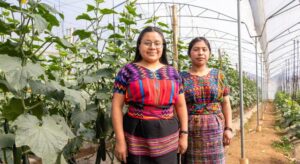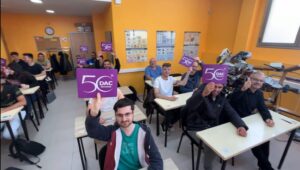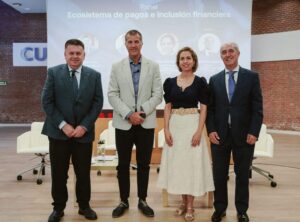Maibelin Rosales, born in Venezuela 40 years ago, is now a prominent materials science doctor at the University of Chile. Throughout her career, she has investigated how to develop nanomaterials with various morphologies, such as nanotubes, nanosheets, and nanoflowers. Her researched “nanomaterials” not only have beautiful shapes, but also possess innovative properties. To observe and characterize them, Rosales uses high-resolution instruments, such as electron microscopes.
The idea is simple, but the possibilities are many. In particular, the nanomaterials created at the Advanced Mining Technology Center (AMTC) of her university are used to treat water contaminated with toxic elements, such as arsenic, and in the production of alternative energies, such as green hydrogen.
In Chile, treating water contaminated with arsenic is of great importance due to its high natural concentration in water, especially in the northern part of the country. The World Health Organization (WHO) has identified arsenic as a toxic and carcinogenic element. The maximum allowed limit for drinking water is 10 parts per billion (ppb), however, in rivers in northern Chile, concentrations of up to 3,000 ppb have been found. This is a serious problem, as people living in the north consume this water for drinking, cooking, and irrigating crops, resulting in high cases of skin cancer, lung cancer, and cardiovascular diseases.
Rosales develops specific nanomaterials, based on titanium dioxide, to transform and capture arsenic present in the water. These nanoparticles can change their size and shape through hydrothermal synthesis, adjusting to conditions such as temperature, reaction time, and precursor concentration. Once in contact with contaminated water, the nanomaterials are activated by sunlight, generating reactive oxygen species that oxidize arsenic and other contaminants.
The initial trials are carried out using synthetic water with arsenic concentrations similar to those in rivers, placing the water under agitation under solar irradiation. Once the contaminant decreases to acceptable levels, the nanomaterials are separated from the treated water by filtration and reused.
Recently, Rosales and her team have completed a pilot plant project in northern Chile, scaling up the laboratory technology to a larger scale. This pilot plant treats 200 liters of contaminated water per hour, achieving the drinking water standard of 10 ppb. Additionally, this plant is electrically autonomous, using solar panels, ideal for remote areas without access to water treatment stations.
The commercial viability of this technology largely depends on the production cost of the nanomaterials. Although they currently have a high cost on a laboratory scale, mass production could significantly reduce costs, making the technology profitable and competitive.
Beyond treating water contaminated with arsenic, these nanomaterials can degrade other contaminants such as those from the textile industry and emerging contaminants such as antibiotics and pharmaceutical derivatives, as well as heavy metals. Rosales is also working on a postdoctoral project in green hydrogen production, seeking to make the nanomaterials not only absorb solar energy, but also self-heat to increase reaction efficiency.
In a recent feat, Rosales has been awarded a Marie Sklodowska-Curie MSCA postdoctoral scholarship to treat water with emerging contaminants using her nanomaterials and sunlight. This new challenge will take her to Spain, Portugal, and Ireland, where she will continue innovating in sustainable solutions to current major environmental problems.
Source: MiMub in Spanish












